
7 hotspots of Dutch architecture
Dutch architecture has made a comeback. Since the 2008 financial crisis, architects in the Netherlands have been blooming. And the results are impressive! From Amsterdam and Rotterdam to Groningen and Limburg, the Netherlands is home to many impressive, must-see buildings and landscapes. All of them are innovative projects that have been completed in the past few years. We have compiled a list of seven architectural hotspots that deserve a place on your bucket list.
- Architects combine aesthetics with practical innovation.
- Historical elements in new, functional spaces.
- From asphalt to green spaces: urban renewal as a connection to nature.
🎧Listening instead of reading? Check out our podcast on architecture
Dutch architecture reigned supreme for decades. This was partly due to the Superdutch, a period from 1990 to 2008 in which well-known Dutch architects such as Rem Koolhaas and Ben van Berkel designed one iconic structure after the other. The sky was the limit. This came to a halt with the financial crisis, when the sector suffered a dip, but now Dutch architecture is back! Driven by innovation, decisiveness and a focus on how the building is experienced, architectural firms are rapidly putting Dutch architecture back on the map.
Did you know?
Dutch architects Winy Maas (MVRDV), Ben van Berkel (UN Studio) and Rem Koolhaas (OMA) enjoy international renown. For example, architectural firm OMA has offices in Hong Kong, New York, Dubai and Rotterdam.
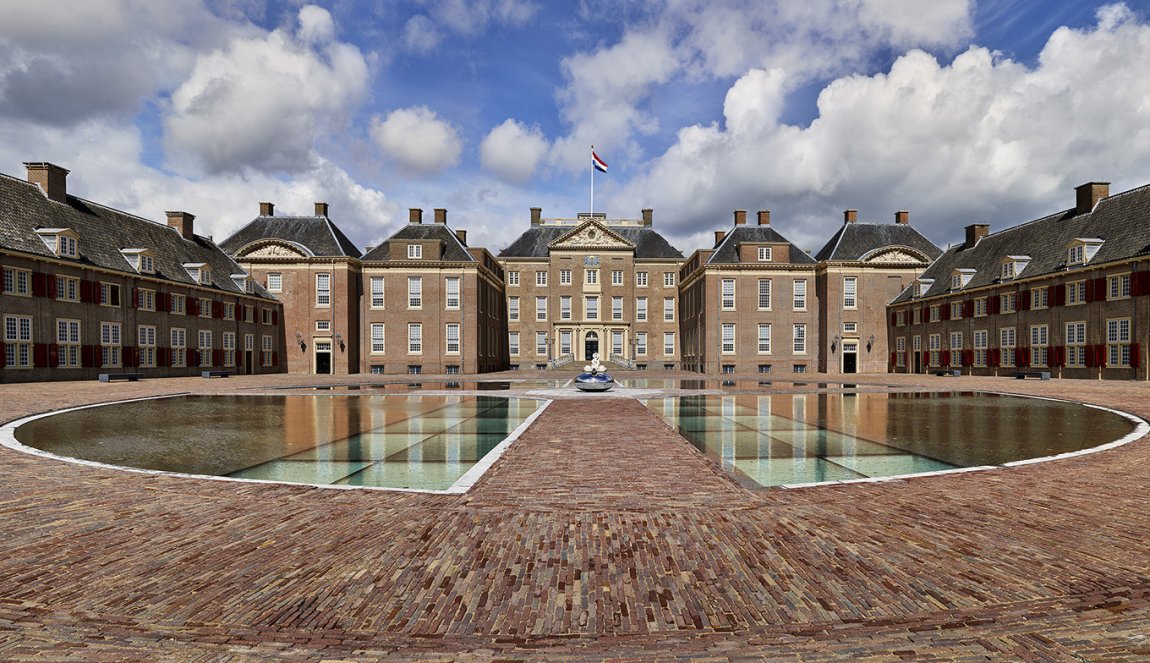
You certainly don't have to be in the Randstad conurbation to enjoy this. There are plenty of unique sights throughout the Netherlands. After having visited a beautifully renovated museum in Gelderland, you can be at a green canal in Utrecht within an hour. The short distances and the array of very different architectural styles make a visit to the Netherlands unique. This is mainly thanks to architectural firms such as KAAN Architecten, Mecanoo and Office Winhov, who are experts at skilfully combining a (post)modernist style with historical values.
National Holocaust Museum
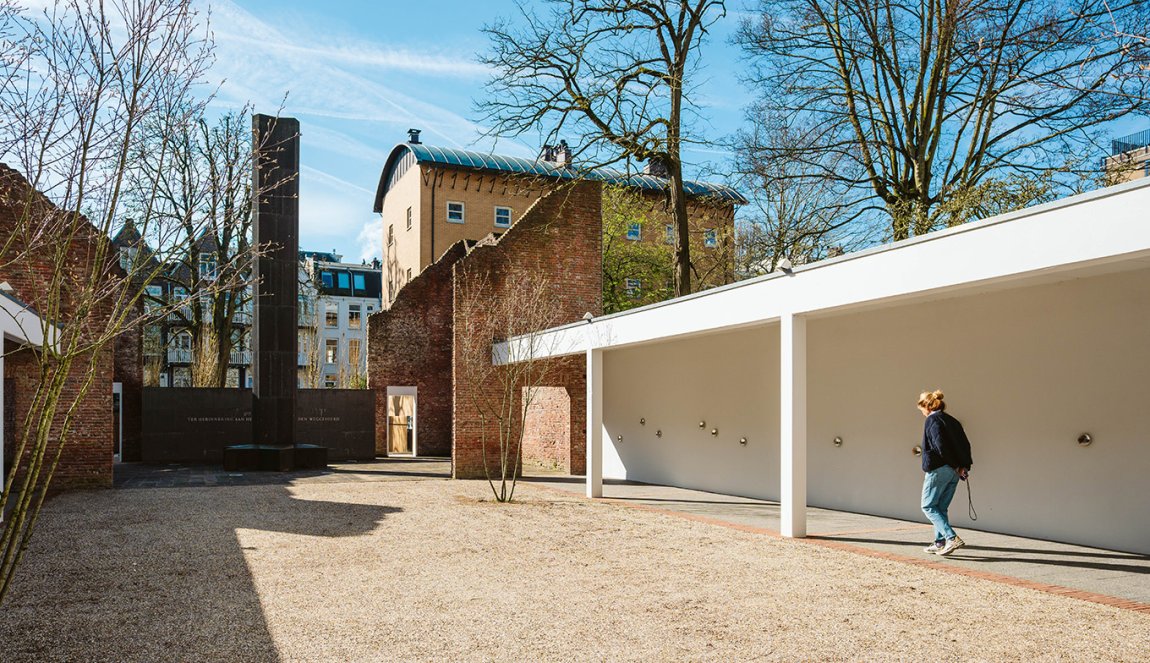
Amsterdam is brimming with architectural hotspots, from the Concertgebouw concert hall and Central Station to the recently completed glass headquarters of Booking.com. A lesser-known - but no less unique - project is the National Holocaust Museum, which was opened by King Willem-Alexander on 10 March 2024. This bright and transparent museum tells a moving story of events that took place during the Second World War. The minimalist interior is the striking choice of architecture firm Office Winhov. It puts the focus squarely on the museum's collection, which highlights the personal stories of persecuted Jews and the history of the location.
Catharijnesingel canal
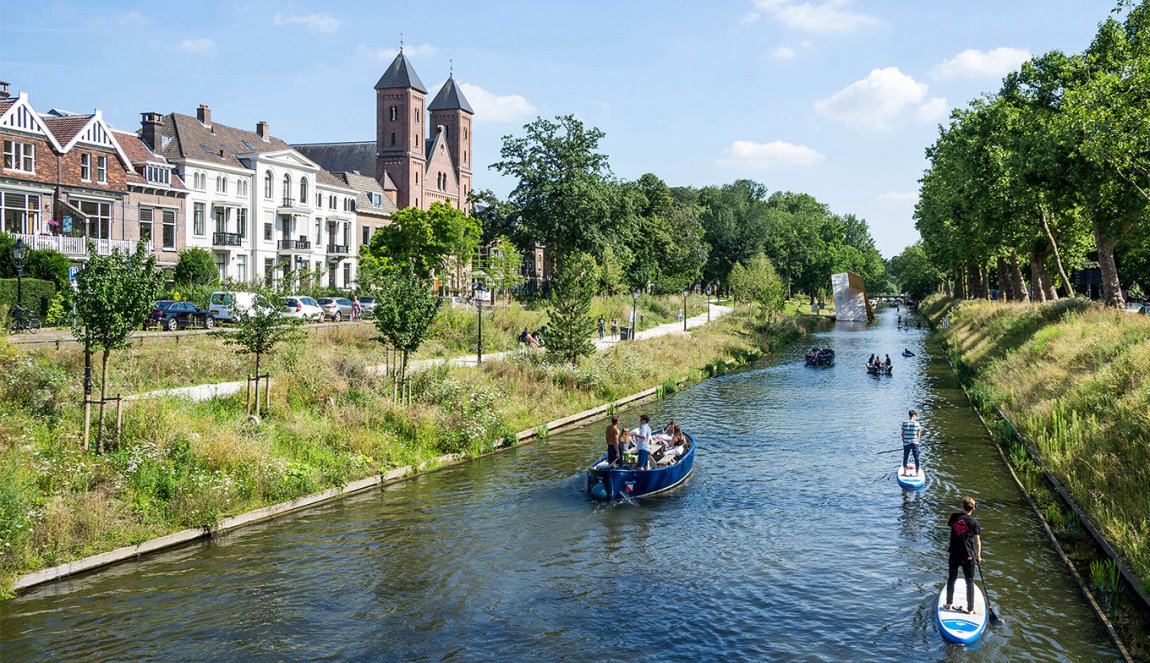
A green park might not be the first thing that comes to mind when thinking of the Randstad conurbation. Yet that is exactly what has been created in Utrecht by landscape architect OKRA . Between 2017 and 2020, the firm transformed the paved Catharijnebaan into the Catharijnesingel, a nature-rich city canal right next to Utrecht Central Station. This approximately two-kilometre-long park brings residents and visitors back in touch with water, and its abundance of greenery makes Utrecht a healthier place. One could even say it puts the city on a par with Giethoorn, the picturesque water village in the province of Overijssel!
And while you're in the area, why not visit the world's largest bicycle parking facility, located under Utrecht Central Station. It has space for 12,500 bikes and walking through the labyrinth of bicycles is an adventure in itself.
Forum Groningen
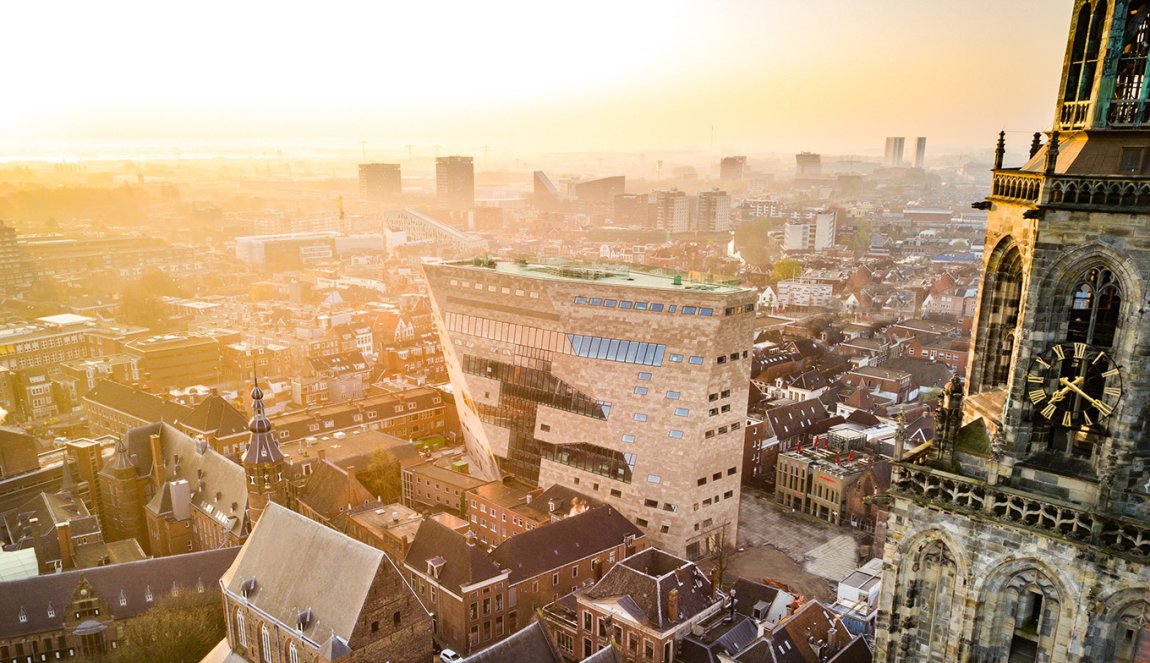
Forum Groningen is a new star attraction in the Noord-Nederland region. Designed by NL Architects, this multifunctional centre is a library, museum, cinema and media lab in one. The open spaces of the sleekly designed building are strung together with floating escalators, providing spectacular views from each floor. The Forum's impressive exterior has also earned it a top spot in the capital city of the province of Groningen. The façade is 'cut off' differently from each side, which makes this impressive building seem more like a sculptural work of art.
Spending the day in Groningen? Be sure to visit the Kunstwerf cultural site within walking distance of the Forum. It's home to dance and theatre companies and is a work of art in itself due to the surprising interplay between indoor and outdoor spaces.
LocHal
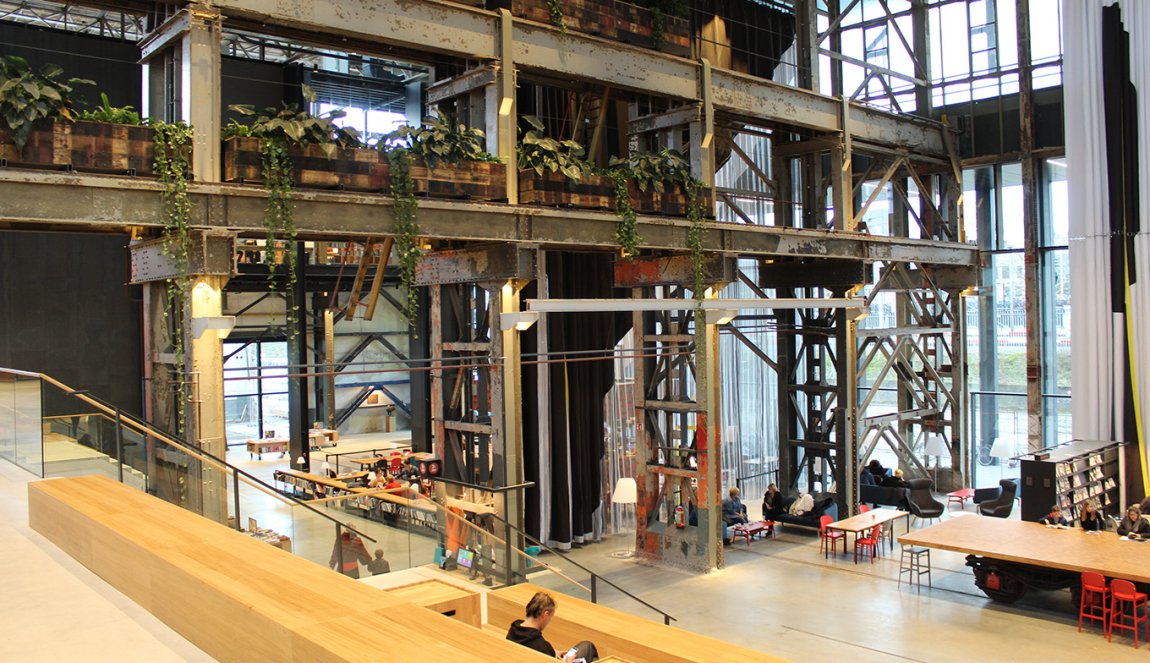
The city of Tilburg has an architectural pearl in the LocHal, designed by architectural firm Mecanoo. The site, built in 2018, serves a variety of functions, from a public library and co-working spaces to a large urban hall for events and exhibitions. Even the building's location is special. The LocHal is built in a former locomotive roundhouse and the architect has used this history in the design, for example by leaving the original steel structure visible in the extraordinary entrance area.
And what is more, the hall can be divided into several zones with six floor-to-ceiling canvases – a spectacular sight that allows the LocHal to be used for all kinds of functions without the need for expensive interventions.
Markthal
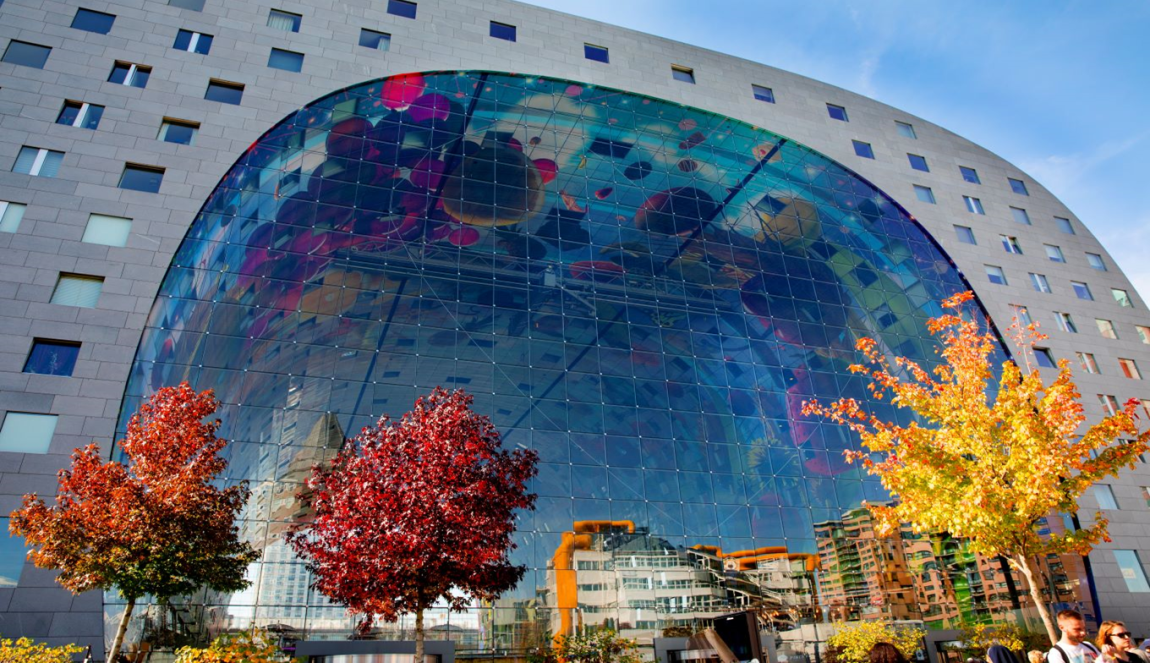
Rotterdam has no shortage of iconic buildings. Well-known examples include the elegant Erasmus Bridge and the Booijmans van Beuningen Depot with its striking mirrored façade. But don't forget to visit the Markthal indoor market. This one-of-a-kind building was designed by one of the Netherlands' best-known architects, Winy Maas of MVRDV. The Markthal combines housing with an indoor market and makes clever use of the building's striking shape.
The Markthal's convex ceiling is fitted with 4,500 aluminium sheets onto which a colourful artwork of flowers under a sunny sky was printed, to give the impression of perpetual summer. Fun fact: Pixar animation studio collaborated on this artwork by Arco Coenen and Iris Roskam. Doing your shopping has never been such a joyful experience.
The transformed Het Loo Palace now exudes the grandeur befitting one of the Netherlands' most renowned museums.
Het Loo Palace Museum

A palace visit is usually a destination in itself but in Apeldoorn they go a step further. Since 1984, Het Loo Palace has also been serving as a museum, with a stunning garden as the icing on the cake. In 2023, KAAN architects extended the building by another 5,000 m2. The entrance area of the restored palace is just gorgeous, with a new water feature around a fountain. From the entrance, you descend into the new underground museum, a spectacle of elongated corridors and open spaces with marble floors and wall coverings. The symmetrical design precisely follows the lines of the above-ground buildings. Clever use of this same technique has been made in the Grand Foyer under the forecourt in particular. In this area, windows have been incorporated in the ceiling, so that you are bathed in daylight even when underground.
Need some rest after all that culture? The museum conveniently borders the largest park of the Netherlands: Hoge Veluwe National Park. Hop on one of the 1,800 famous white bikes that are free for all to use and cycle through forests and moors. You might even spot a deer!
The Groene Loper
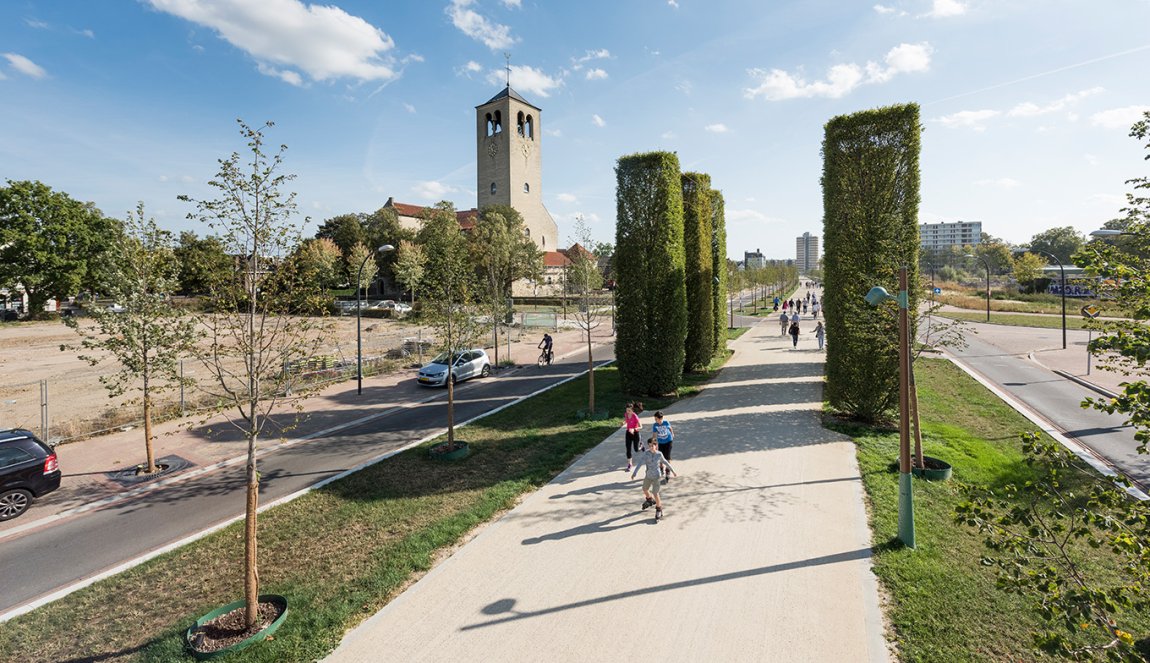
The A2 motorway once cut straight through Limburg's capital city of Maastricht, causing noise pollution and poor air quality in the surrounding neighbourhoods. In 2006, the municipality decided that enough was enough and commissioned urban planning firm West 8 to design a new urban corridor. Nearly 20 years later, what was once the site of the motorway is now De Groene Loper: a new urban corridor for cyclists, pedestrians and greenery.
Get on a bike and follow the new cycle path from the city centre to Maastricht's northern outskirts, passing Geusselt Castle and the monumental Kanjel villa along the route. The motorway traffic is now sent through two newly constructed tunnels of no less than 2.3 kilometres long – just driving through them is an experience in itself! As a result, the city is no longer separated by a barrier, and the surrounding neighbourhoods are connected to each other with a new place for rest and recreation.